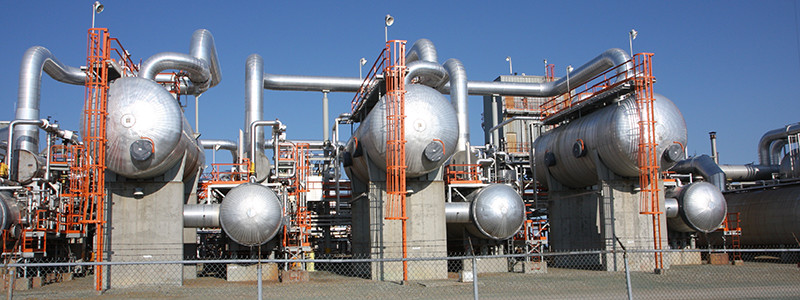
Safety
Good housekeeping in the Claus unit is very important. Tools, hoses and ladders need to be in the proper location. PPE cabinets need to be stocked. H2S monitors and evacuation alarms need to be regularly tested. Incidents can happen with little warning in a Sulfur Complex. Probably one of the most common is blowing seal legs. It is important for the Unit Engineer and Operations to truly understand an upset situation and what pressure their Sulfur train is operating at. At the front end of the MRF, the pressures above approximately 14 psig can cause the seal legs to send hot, molten Sulfur into the atmosphere. In many cases the Seal leg acts as the Pressure relief valve of the Sulfur train, so this is where the process will release. It is prudent in an upset situation, when the process system nears relief; no personnel are in the line of fire of the seal legs.
Monitoring
Engineers and operators alike need to be vigilant as to any changes happening in the unit. This can be accomplished by visual verification, operations “rounds” and the H2S/SO2 analyzer, temperature, level and pressure are extremely important as they will be leading indicators of:
- Possibly tripping out the MRF, if the WHB level is too low
- MRF and Converter temperatures stray off normal operating limits, causing an SO2 breakthrough. Is the analyzer working properly?
- Pressures between the MRF, Converter and condensers. Are they consistent?
- Is all Heat tracing systems working properly? Sulfur will set up if not kept between 270-300°F.
Rolling Stock
Check pumps and drivers regularly for oil, vibration, seal leaks, hot motor bearings. A Robust PMP (Preventative Maintenance Program) pays for itself. Blowers and Pit pumps are critical pumps in a Sulfur Unit. Without the Blowers, there is no combustion in the MRF. Without a pit pump, the containment pit will over flow.
Corrosion
Be aware as a Maintenance coordinator, Project lead, Inspector or Engineer, what your metallurgy issues are in your Sulfur unit. Keep your Inspection program current. Be sure your temperature indication on your MRF is reading correctly and analyzers are checked frequently to work properly. The feed coming into the Sulfur Unit is corrosive in itself. If Operating limits are not kept within range it will affect catalyst activity and plugging. Corrosion is frequently found in the nozzle between the exhaust of the MRF to the 1st Condenser. Dew point issues between the Converter and condensers also cause corrosion issues.
Environmental
Refiners need to adhere to Environmental regulations and understand Maximum Daily allowances for their facility. Units need to be designed to tolerate upsets so as not inadvertently be routed to the Incinerator. And in the case of a typical Claus unit, if the upset is critical enough, the unit will relieve itself to the Incinerator through emergency trip valves and violate Environmental Regulations by exceeding S02 limits. Typically downstream of the Sulfur Train, a Tail gas unit will treat the remaining gases before being routed to the Incinerator and by doing so, keeping the unit in compliance.






